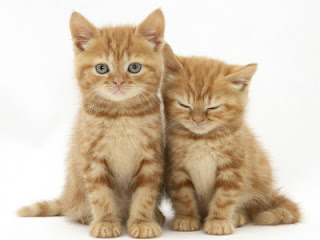 |
A common initial step when investigating the impact of predators on prey populations is to document, either temporally or spatially, relationships between the numbers of prey and their predators. Such studies have generally revealed negative correlations between wild felids and their prey: examples include populations of lion Panthera leo and wildebeest Connochaetes taurinus, tiger Panthera tigris and various ungulate species, and species of Lynx and their Lepus prey. These negative correlations arise because wild felids are generalists, and thus when their preferred prey species decline, individuals can maintain their hunting efficiency by switching to other prey species with the consequence that felid population densities are maintained.
Domestic Cat are generalist obligate predators, which appear to hunt opportunistically, and receive regular supplementary food and other care from humans (Pearre & Maass, 1998). Domestic cat densities and those of their prey may thus be decoupled. This decoupling has two important consequences. First, domestic cat densities may reflect human population density and the predisposition of humans towards keeping cats as pets. Thus cat densities are likely to be highest in the places with the most people, i.e. cities and other urbanized areas. Second, the nature of this predator–prey system is one in which negative correlations between predator and prey densities could arise.
If Domestic Cat behaved in a similar manner to wild felids one might expect that avian and domestic cat population densities would be negatively correlated, at least for species that are vulnerable to cat predation. Here, we investigate the nature of the relationship between domestic cat densities and the structure of avian assemblages in urban areas. We use Britain as a case study due to its highly urbanized nature, and the particularly high density of some urban cat populations in this region. We consider the relationships between cat densities and both avian species richness and population densities, and take the potentially confounding effects of the availability of green space into account.
Our initial hypothesis was that cats were adversely impacting urban bird population, and thus negative correlations between cat density and avian species richness and/or density would arise. We assumed that small-bodied and potential prey species were more vulnerable to cat predation, and thus predicted that the species richness and density of these groups would exhibit the strongest negative relationships with cat densities. to the availability of volunteer observers in each of 83 recording regions (roughly counties or groups of counties) across Britain. Avian data are collected twice per annum (early April to mid-May, and mid-May to late June).













0 comments:
Post a Comment